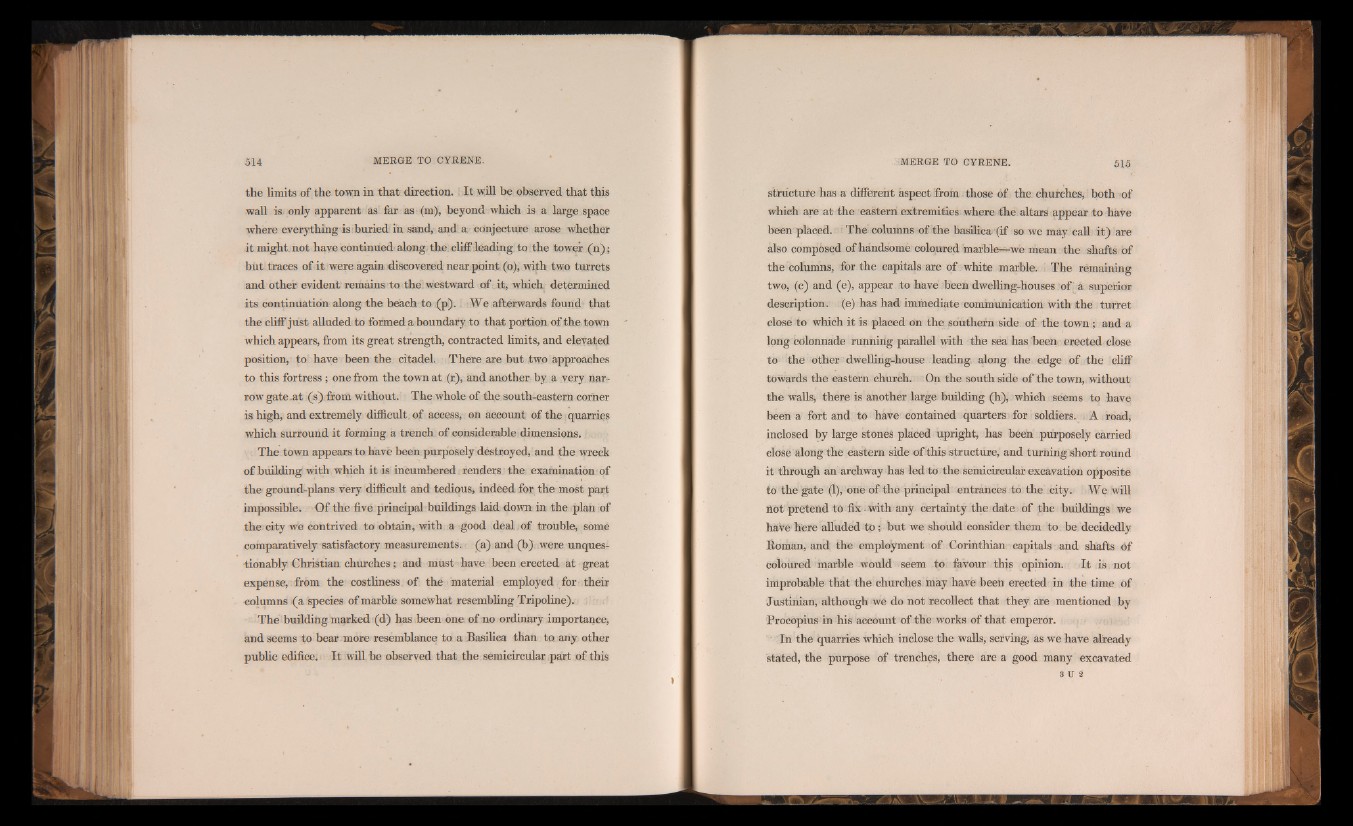
the limits of the town in that direction. It will be observed that this
wall is only apparent as far as (m), beyond which is a large space
where everything is buried in sand, and a conjecture arose whether
it might not have continued along the cliff leading to the tower (n);
but traces of it were again discovered near point (o), with two turrets
and other evident remains to the westward of kit, which, determined
its continuation along the beach to (p). :We afterwards found; that
the cliff just alluded to formed a boundary to that portion of the town
which appears, from its great strength, contracted limits, and elevated
position, to have been the citadel. There are but two approaches
to this fortress; one from the town at (r), and another by a very narrow
gate.at (s) from without. The whole of the south-eastern corner
is high, and extremely difficult, of access, on account of the quarries
which surround it forming a trench of considerable dimensions.
The town appears to have been purposely destroyed, and the wreck
of building with which it is incumbered renders the examination of
the ground-plans very difficult and tedious, indeed for the most part
impossible. Of the five principal buildings laid down in the plan of
the city we contrived to obtain, with a good deal of trouble, some
comparatively satisfactory measurements, (a) and (b) were unquestionably
Christian churches; and must have, been erected at great
expense, from the costliness, of the material employed for their
columns (a species of marble somewhat resembling Tripoline). :
The building marked (d) has been one of no ordinary importance;
and seems to bear more resemblance to a Basilica than to any other
public edifice. I t will be observed that the semicircular part of this
structure has a different aspect from those of the. churches, both of
which are at the eastern extremities; whpre. the altars appear to have
been placed. The columns of the basilica (if so we may eall it) are
also composed of handsome coloured marble—we mean the shafts of
the columns, for the capitals are of white marble. The remaining
two, (c) and (e), appear to have been dwelling-houses of a superior
description, (e) has had immediate communication; with the turret
close to which it is placed on the southern side of the town ; and a
long colonnade running parallel with the sea has been erected close
to the other dwelling-house leading, along the edge of the cliff
towards the eastern church. On the south side of the town, without
the walls, there is another large building (h), which seems to have
been a fort and to have contained quarters for soldiers. .A road,
inclosed by large stones placed upright, has been purposely carried
elose along the eastern side of this structure, and turning short round
it through an archway has led to the semicircular excavation opposite
to the gate (1), one of the principal entrances to the city. We will
not pretend to fix ■ With any certainty the date of the buildings we
haVe here alluded to ; but we should consider; them to be decidedly
Roman, and ihe employment of Corinthian capitals and shafts Of
coloured marble would seem to favour this opinion. I t is not
improbable that the churches, may have been erected in the time of
Justinian, although we do not recollect that they are mentioned by
Procopius in his account of the works of that emperor.
In the quarries which inclose the walls, serving, as we have already
stated, the purpose of trenches, there are a good many excavated